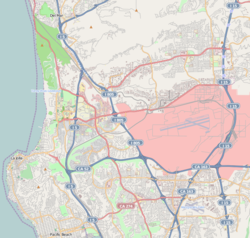
Theodor Seuss Geisel was an American children's author and cartoonist. He is known for his work writing and illustrating more than 60 books under the pen name Dr. Seuss. His work includes many of the most popular children's books of all time, selling over 600 million copies and being translated into more than 20 languages by the time of his death.
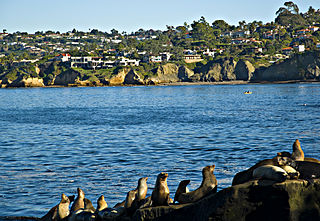
La Jolla is a hilly, seaside neighborhood in San Diego, California, occupying 7 miles (11 km) of curving coastline along the Pacific Ocean. The population reported in the 2010 census was 46,781. The climate is mild, with an average daily temperature of 70.5 °F (21.4 °C).
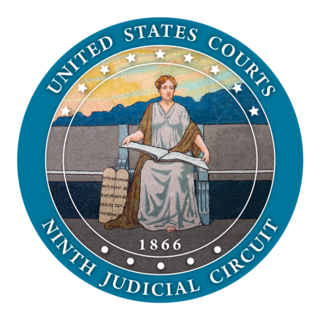
The United States Court of Appeals for the Ninth Circuit is the U.S. federal court of appeals that has appellate jurisdiction over the U.S. district courts for the following federal judicial districts:

Mount Davidson is the highest natural point in San Francisco, California, with an elevation of 928 feet (283 m). It is located near the geographical center of the city, south of Twin Peaks and Portola Drive and to the west of Diamond Heights and Glen Park. It dominates the southeastern view from most of Portola Drive. It is one of San Francisco's many hills and one of its original "Seven Hills".

The Thomas More Law Center is a Christian, conservative, nonprofit, public interest law firm based in Ann Arbor, Michigan, and active throughout the United States. According to the Thomas More Law Center website, its goals are to "preserve America's Judeo-Christian heritage, defend the religious freedom of Christians, restore time-honored moral and family values, protect the sanctity of human life, and promote a strong national defense and a free and sovereign United States of America".

Mary Margaret McKeown is a senior United States circuit judge of the United States Court of Appeals for the Ninth Circuit based in San Diego. McKeown has served on the Ninth Circuit since her confirmation in 1998.
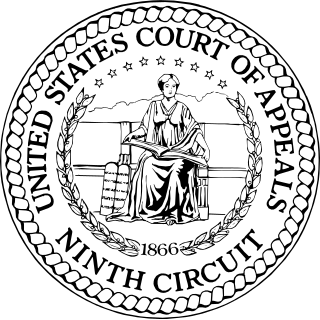
Barnes-Wallace v. Boy Scouts of America was a case involving the City of San Diego's relationship with the Boy Scouts of America.
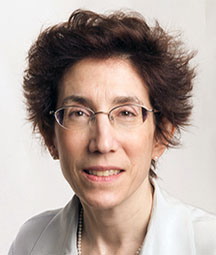
Sandra Segal Ikuta is a United States circuit judge of the United States Court of Appeals for the Ninth Circuit.
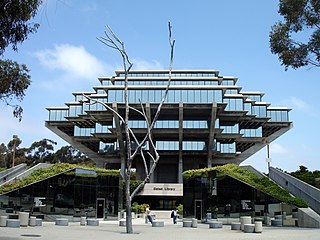
Geisel Library is the main library building of the University of California, San Diego. It is named in honor of Audrey and Theodor Seuss Geisel, better known as children's author Dr. Seuss. The building's distinctive architecture, described as occupying "a fascinating nexus between brutalism and futurism", has made it an iconic and widely recognized building on campus. The library is located in the center of the UC San Diego campus.
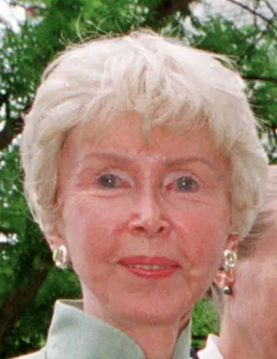
Audrey Grace Florine Stone was the second wife of American children's book author Theodor Geisel, to whom she was married from 1968 until his death in 1991. She founded Dr. Seuss Enterprises in 1993, and was president and CEO of the company until her death in 2018.

The Mount Soledad Cross is a prominent landmark located on top of Mount Soledad in the La Jolla neighborhood of San Diego, California. The present structure was erected in 1954; it is the third Christian cross in that location, the first having been put up in 1913. Architect Donald Campbell designed the present cross in prestressed concrete. It is 29 feet (8.8 m) tall with a 12-foot (3.7 m) arm spread. It is the centerpiece of the Mt. Soledad National Veterans Memorial.
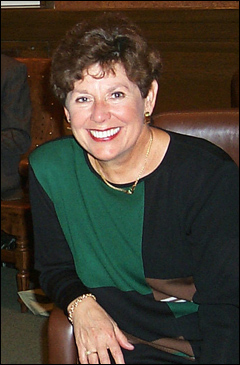
Judith Nelsen Keep was a United States district judge of the United States District Court for the Southern District of California.
Salazar v. Buono, 559 U.S. 700 (2010), was a decision by the Supreme Court of the United States regarding the establishment clause of the First Amendment to the United States Constitution. The case concerned the legality of the Mojave Memorial Cross, a Latin cross which was placed atop a prominent rock outcropping by the Veterans of Foreign Wars foundation in 1934 to honor war dead. The location is known as "Sunrise Rock" in the Mojave National Preserve in San Bernardino County in southeastern California. The Supreme Court ruled that the cross may stay, but also sent the case back to a lower court, making the issue currently unresolved.
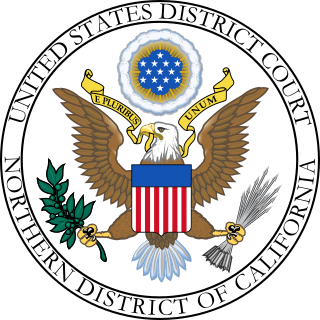
Golinski v. Office of Personnel Management, 824 F. Supp. 2d 968, was a lawsuit filed in the United States District Court for the Northern District of California. The plaintiff, Karen Golinski, challenged the constitutionality of section 3 of the Defense of Marriage Act (DOMA), which defined, for the purposes of federal law, marriage as being between one man and one woman, and spouse as a husband or wife of the opposite sex.

The Audrey Geisel University House, historically known as the William Black House, is the private residence of the chancellor of the University of California, San Diego. Located in La Jolla, California, it is a historic site that is listed on the National Register of Historic Places. It is located at 9630 La Jolla Farms Road and overlooks Black's Beach, the Scripps Coastal Reserve, and the Pacific Ocean.

Peruta v. San Diego, 824 F.3d 919, was a decision of the United States Court of Appeals for the Ninth Circuit pertaining to the legality of San Diego County's restrictive policy regarding requiring documentation of "good cause" that "distinguish[es] the applicant from the mainstream and places the applicant in harm's way" before issuing a concealed carry permit.

What Pet Should I Get? is a Dr. Seuss children's book, posthumously published in 2015. Believed to have been written between 1958 and 1962, the book chronicles the adventures of Jay and Kay from Seuss' One Fish, Two Fish, Red Fish, Blue Fish in their attempts to buy a pet.
Hans Eduard Suess was an Austrian-born American physical chemist and nuclear physicist. He was a grandson of the Austrian geologist Eduard Suess.

Charles LiMandri is an American lawyer. In a case that made national headlines, he litigated against the American Civil Liberties Union (ACLU) in the defense of the Mount Soledad Cross in San Diego. The battle over the religious symbol, which lasted more than 25 years, is one of the longest in the history on the United States. Limandri has a private law practice, and in 2002 he founded the Freedom of Conscience Defense Fund to pay for his pro bono work on behalf of religious freedom.

Horse Museum is a Dr. Seuss book released by Random House Children's Books on September 3, 2019. It is based on an unfinished manuscript by Theodor Seuss Geisel completed by Australian illustrator Andrew Joyner. 250,000 copies were released of the first printing.

